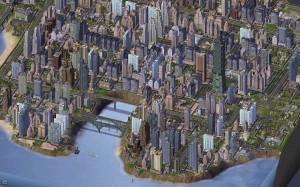 I’m not a city planner. I took one class in college, so I don’t even pretend to be qualified. However, living in a city and trying to commute without a car has led to some insights that I would not get out of a book. Last year I wrote a piece called “The Hegemony of the Automobile“. The more I think about it, the more I believe in this position.
I’m not a city planner. I took one class in college, so I don’t even pretend to be qualified. However, living in a city and trying to commute without a car has led to some insights that I would not get out of a book. Last year I wrote a piece called “The Hegemony of the Automobile“. The more I think about it, the more I believe in this position.
Cities are not laid out with people in mind. They are designed for the car. Walking across 8 lanes of traffic to cross the street in 15 seconds may not be too challenging for able bodied individuals, but when I’m out walking, I see plenty of people who walk with devices to assist their mobility. With cars darting in and out of alleyways, parking lots, driveways, and side streets, it is clear that the sidewalk is an after thought, not a starting point. Cars are the center of the universe. Having grown up in LA, I’m painfully aware of the need for a car. However, when space is an issue, like Manhattan, cars are not king. Even in New York City though, there are plenty of multi-lane roads that impede the pedestrian. Tom Vanderbilt’s series on Slate.com takes a look at the role of the pedestrian in America. Here is the first in a four part series.
Enormous city blocks deter people from walking, as it takes an inordinate amount of time to travel from point A to B. Bikes are nice for these shorter distances, but unless there are clearly marked bike lanes, the casual bike rider will be largely dissuaded from riding. When a U.S. Senator’s spouse is closely linked to a lawsuit against a bike only lane, it is clear that cities (and I speak mostly of the U.S. since this is where I’ve seen this phenomenon), are not centered on the pedestrian or bicyclist. Vanderbilt points out that “There is not a single dollar in the U.S. federal transportation budget dedicated strictly to walking.”
Perhaps there is a future for non-automotive transportation. Carless cities in Europe like this one outside Freiburg, Germany show it is possible in this day and age. Narrower streets such as those found in New Urbanist towns (see here for an example) help slow vehicular traffic, but the layout of towns still separate commercial endeavors from residential locations making use of the car all but mandatory.
[Image source]

